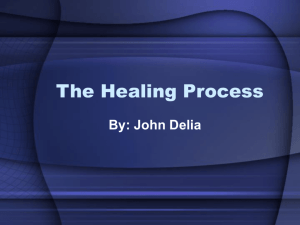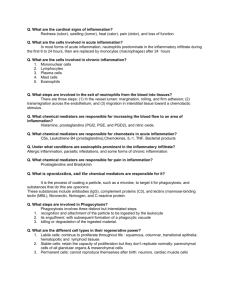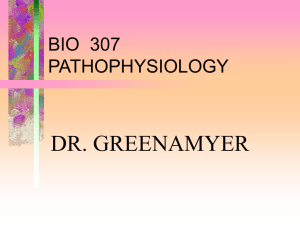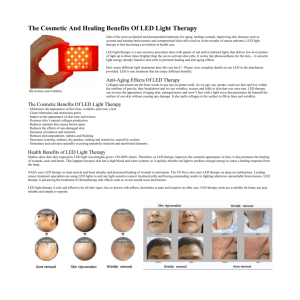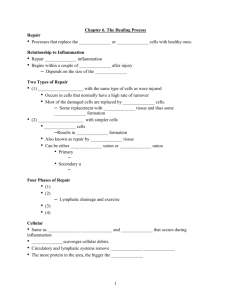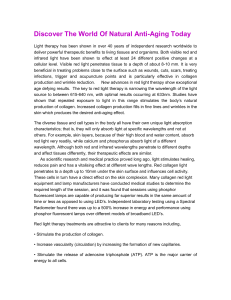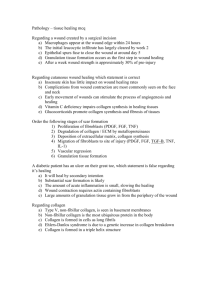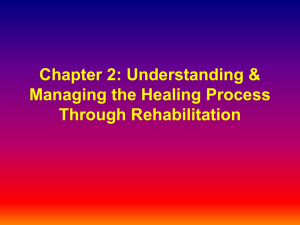Phases of Healing
advertisement
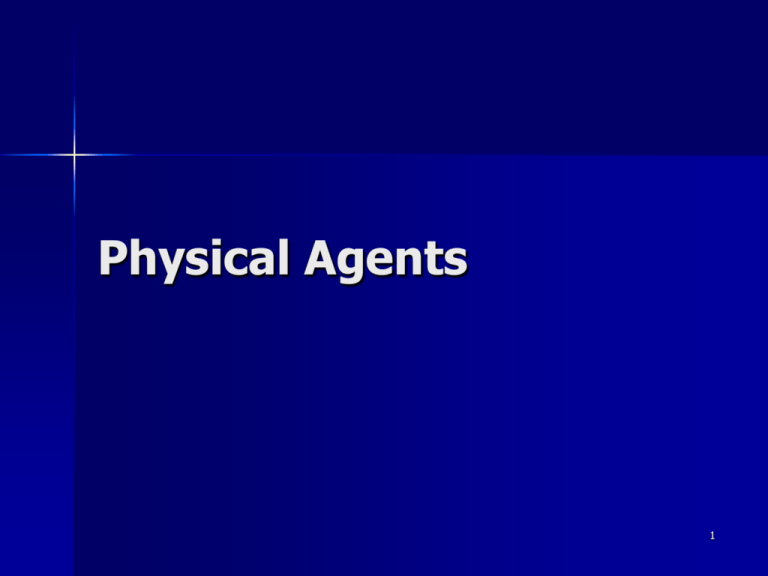
Physical Agents 1 Inflammation and Tissue Repair 2 Common Causes of Inflammation Sprains, strains, and contusions – Soft Tissue Edema Fractures Foreign Bodies Autoimmune Diseases (Rheumatoid Arthritis) Microbial Agents (bacteria) Chemical Agents (acid, base) Thermal Agents Irradiation (UV or radiation) 3 Common Causes of Inflammation 4 Phases of Healing 5 Phases of Healing Inflammation Phase (Days 1-6) Proliferation Phase (Days 3-20) Maturation Phase (Day 9+) Timeframe (days) is NOT absolute! 6 Inflammation Phase Cardinal signs of Inflammation Sign Cause Heat Increased vascularity Redness Increased vascularity Swelling Blockage of lymphatic drainage Pain Physical pressure and/or chemical irritation of painsensitive structures Loss of Function Pain and swelling 7 8 Inflammation Phase Vascular Response – Alterations in microvasculature & lymphatic vessels – Vasodilation & increased permeability 9 Inflammation Phase – Histamine is released which causes vasodilation – Clotting process is activated – Bradykinin is released - pain – Prostaglandins promote increased permeability 10 Inflammation Phase Hemostatic Response – Controls blood loss – Platelets migrate to the injury site and promote clotting – Fibrin and fibronectin enter the injured area & form cross-links with collagen to form fibrin lattice – Fibrin lattice serves as the only source of tensile strength during the inflammation phase 11 Inflammation Phase Cellular Response – Plasma (consisting of RBCs, WBCs, & platelets) circulates to injury site & can cause hematoma or hemarthrosis – WBCs clear the site of debris & microorganisms 12 13 14 Inflammation Phase Cellular Response – Basophils release histamine – Macrophages are involved in phagocytosis & producing collagenase 15 Inflammation Phase Immune Response – Lymphocytes & phagocytes – Increased vascular permeability – Stimulates phagocytosis – Stimulates WBC activity 16 Proliferation Phase Epithelialization – the reestablishment of the epidermis – Uninjured epithelial cells migrate over the injured area and close the injury site 17 Proliferation Phase Collagen Production Fibroblasts produce collagen 1. Fibroblasts synthesize procollagen → 2. Procollagen chains undergo cleavage by collagenase and form tropocollagen → 3. Multiple tropocollagen chains bind to form collagen fibrils → 4. Cross-linking between collagen fibrils form collagen fibers 18 Proliferation Phase Wound Contraction – Epithelialization covers the wound surface – Wound contraction pulls the injury site edges together – Myofibroblasts attach to the margins of the intact skin and pull the epithelial layer inward 19 20 Proliferation Phase Neovascularization – The development of a new blood supply to an injured area – Angiogenesis – the growth of new blood vessels – Vessels in the wound develop small buds that grow into the wound area – Outgrowths join with other arterial or venular buds to form a capillary loop (give wound a pink/red color) 21 Maturation Phase Can take longer than 1 year Density of fibroblasts, macrophages, myofibroblasts, & capillaries decreases Scar becomes whiter as collagen matures & vascularity decreases Remodeling of collagen fibers occurs as a result of collagen turnover Muscle tension, joint movement, soft tissue loading, temperature changes, & mobilization are types of forces that affect collagen structure 22 Chronic Inflammation Can be a result of acute inflammation Can also be a result of an altered immune response (rheumatoid arthritis) Acute = ≤ 2 weeks Subacute = > 4 weeks Chronic = months or years Can result in increased scar tissue & adhesion formation – Can result in loss of function 23 Factors Affecting the Healing Process Local Factors – Type, Size and Location of the injury Well vascularized areas heal faster than poorly vascularized areas Smaller wounds heal faster than smaller wounds – Infection Infections alter collagen metabolism – Vascular Supply 24 Factors Affecting the Healing Process Local Factors – External Forces Physical agents/modalities can affect the healing process – Movement Muscle tension, joint movement, soft tissue loading, temperature changes, & mobilization are types of forces that affect collagen structure 25 Factors Affecting the Healing Process Systemic Factors – Age The pediatric population usually heals faster than the adult and geriatric population – Disease Diabetes, RA, AIDS, cancer, PVD – Medications Corticosteroids and NSAIDS (to a lesser degree) – Nutrition Amino acids, vitamins, minerals, water, caloric intake 26 Healing of Specific Musculoskeletal Tissues Cartilage – Limited ability to heal due to lack of lymphatics, blood supply, & nerves – In injuries that involve articular cartilage & subchondral bone, vascularization is improved & cartilage heals more effectively Yet, proteogylcan content is low & thus predisposed to degeneration 27 Healing of Specific Musculoskeletal Tissues Tendons and Ligaments – Heal more effectively than cartilage because of increased vascular supply – Mobilization can help in the remodeling of collagen fibers (must be progressed slowly) – Ligament healing depends on: type of ligament, size/degree of injury, & amount of loading applied For example, the MCL heals better than the ACL Note: Even after healing, the injured ligament is ~ 30% - 50% weaker than the uninjured ligament 28 Healing of Specific Musculoskeletal Tissues Skeletal Muscle – Muscle can be injured by blunt trauma (contusion), excessive contraction, excessive stretch, or muscle-wasting disease – Muscle cells cannot proliferate but, in some cases, satellite cells can form new muscle cells (conflicting research) 29 Healing of Specific Musculoskeletal Tissues Bone – Impaction – impact force > strength of bone – Induction – osteogenesis is stimulated – Inflammation – Soft callus – union of bony fragments by fibrous or cartilaginous tissue, increased capillary density, & increased cell proliferation – Hard callus – hard callus bone covers the fracture site 3 wks – 4 months (depends) – Remodeling – complete healing (months – years to occur) 30
